Tangled Lines, Salted Hands
Scenes from the Sicilian coast, where work, tide and time intertwine
There’s a certain kind of poetry in the mess: nets coiled and snarled, ropes fraying at the edges, wooden floats rubbed smooth by years of use. It’s not clean or composed, but it’s honest; beautiful, even, in the way that only things shaped by time and necessity can be.
These photographs weren’t all made in the same Sicilian harbor, but they speak a common language: one of labor, patience, and the ever-present sea. The men who work these boats and handle these nets carry that language in their bodies. You can see it in the way they hold a line, or mend a net, or lean into the weight of their day.
What draws me in—beyond the boats and the nets themselves—is the evidence of use. The textures. The repetition. The accidental compositions created when one strand crosses another, when sun-faded red threads knot against weathered wood. These aren’t props. They’re tools. But in the right light, they verge on sculpture.
And always, there’s the water.
I’ve never been able to resist coastal towns. There’s something about the rhythm of life near the sea—how everything breathes a little differently. A walk around a port engages the senses. In your ears are the calls of the gulls, the slap of the water on the docks and the clinking of metal fittings as the boats bob in the swell. The air smells and tastes of salt and diesel and fish. Somehow it smells exactly like motion—like the world is shifting beneath your feet, and that shift is natural, expected.
I’m certain that those things impact how and what I photograph when I’m near working boats on the water, engaging more of my senses and directing my eye to see if I can photograph the equivalent of those smells and sounds and tastes.
That’s the space I’m drawn to photograph—not just the things, but the feeling of the place. The sense that life here isn’t about perfect arrangements, but about doing what needs to be done. And in doing so, leaving behind these quiet, accidental still lifes of work and water and time.
Everything in these places feels slightly undone and slightly eternal at the same time. Boats flake paint and take on water, but they’re patched and sent back out. Nets are mended, not replaced. People stop to talk because the tide isn’t going to change any faster if they rush. I like that tempo. I like the unapologetic usefulness of everything, and the way beauty sneaks in through the cracks.
I try to take a lesson from these fishermen — patching and mending rather than reaching for something new. They work with what they have, repairing the torn parts, knotting things back together, trusting that usefulness and beauty can coexist in the worn and weathered. Maybe there’s something in that rhythm — a slower, quieter kind of resilience — that’s worth holding onto. Not everything needs to be replaced. Sometimes, the fix is the story and a repair is all that is needed.
During this dark and difficult time, we all need to do what we can to keep our spirits up. I post my photographs and thoughts here to show that there is still beauty in the world and to promote the idea that there is grace, positivity and inclusivity in the everyday.
Throughout history, goodness most always wins, and the arts can lead the way in reflecting the good all around us. There is still light in the world.


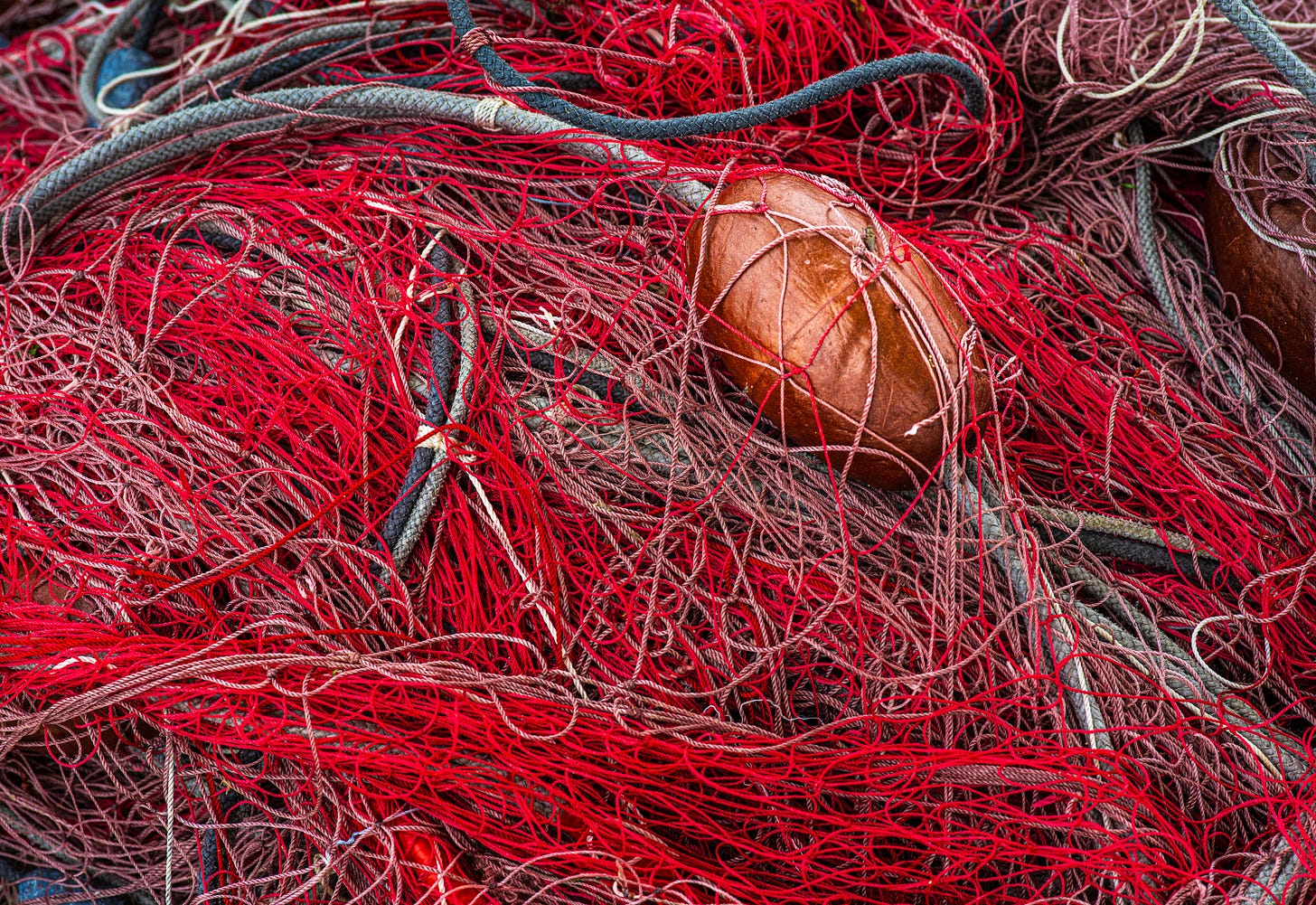
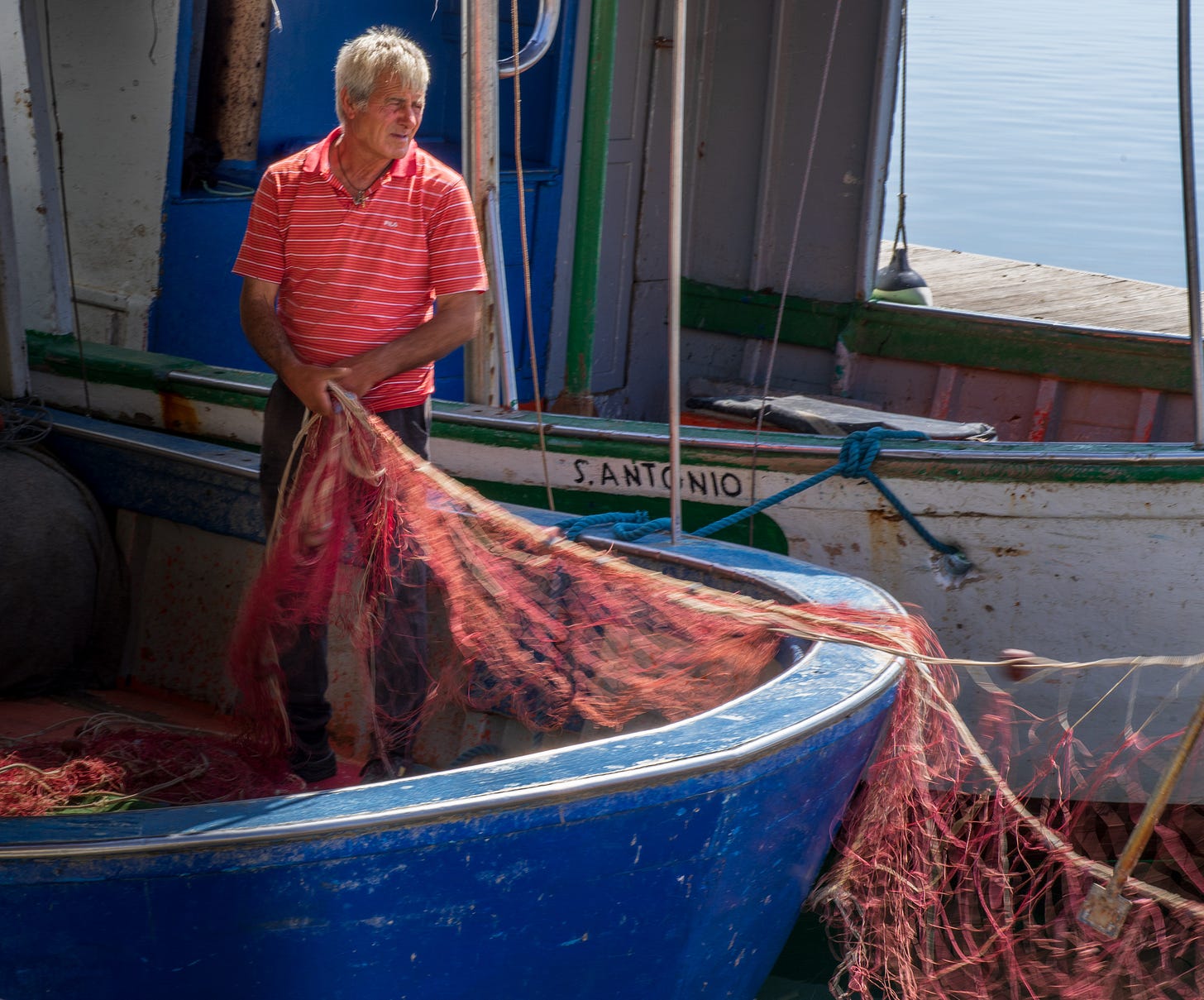
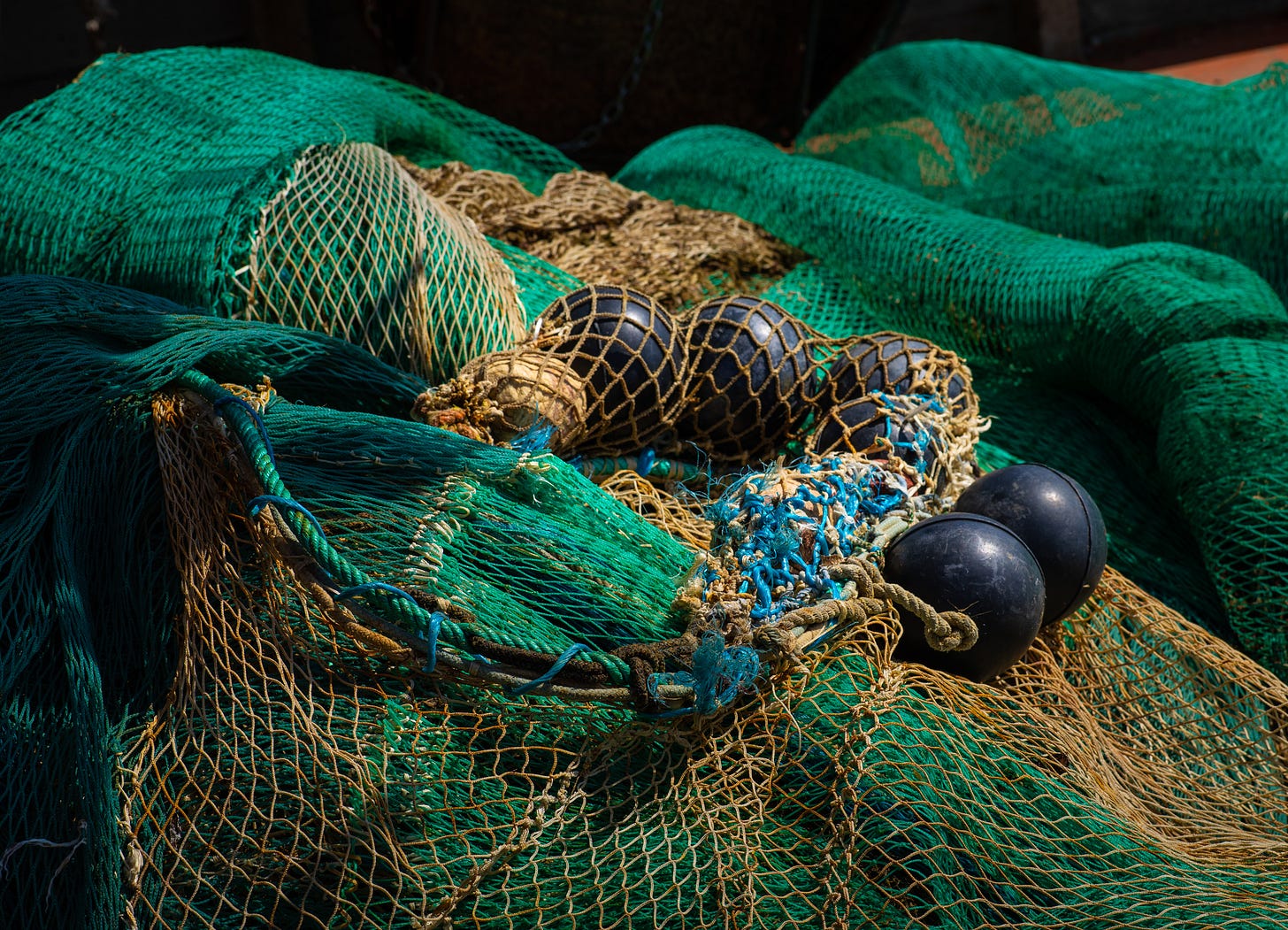
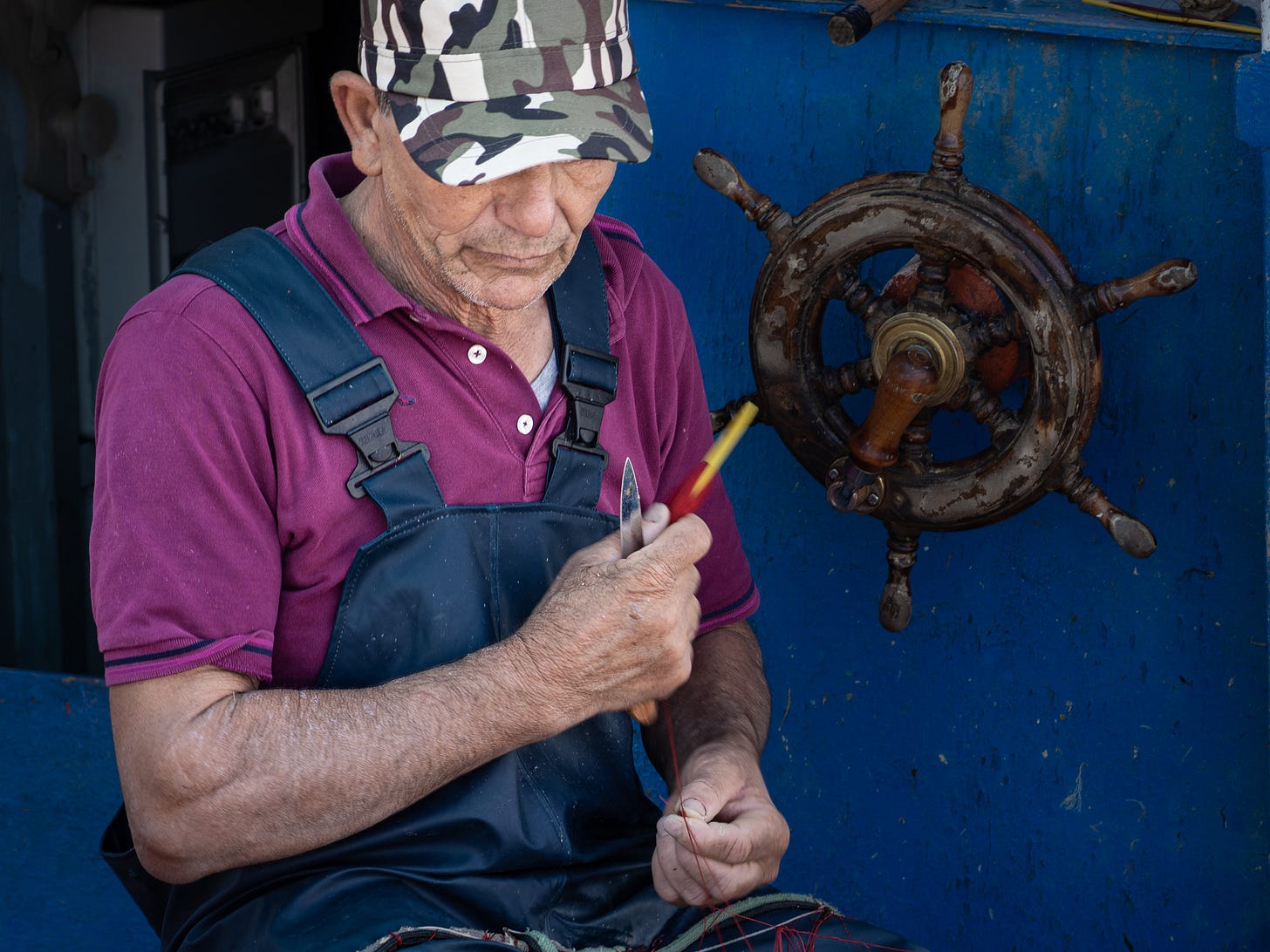
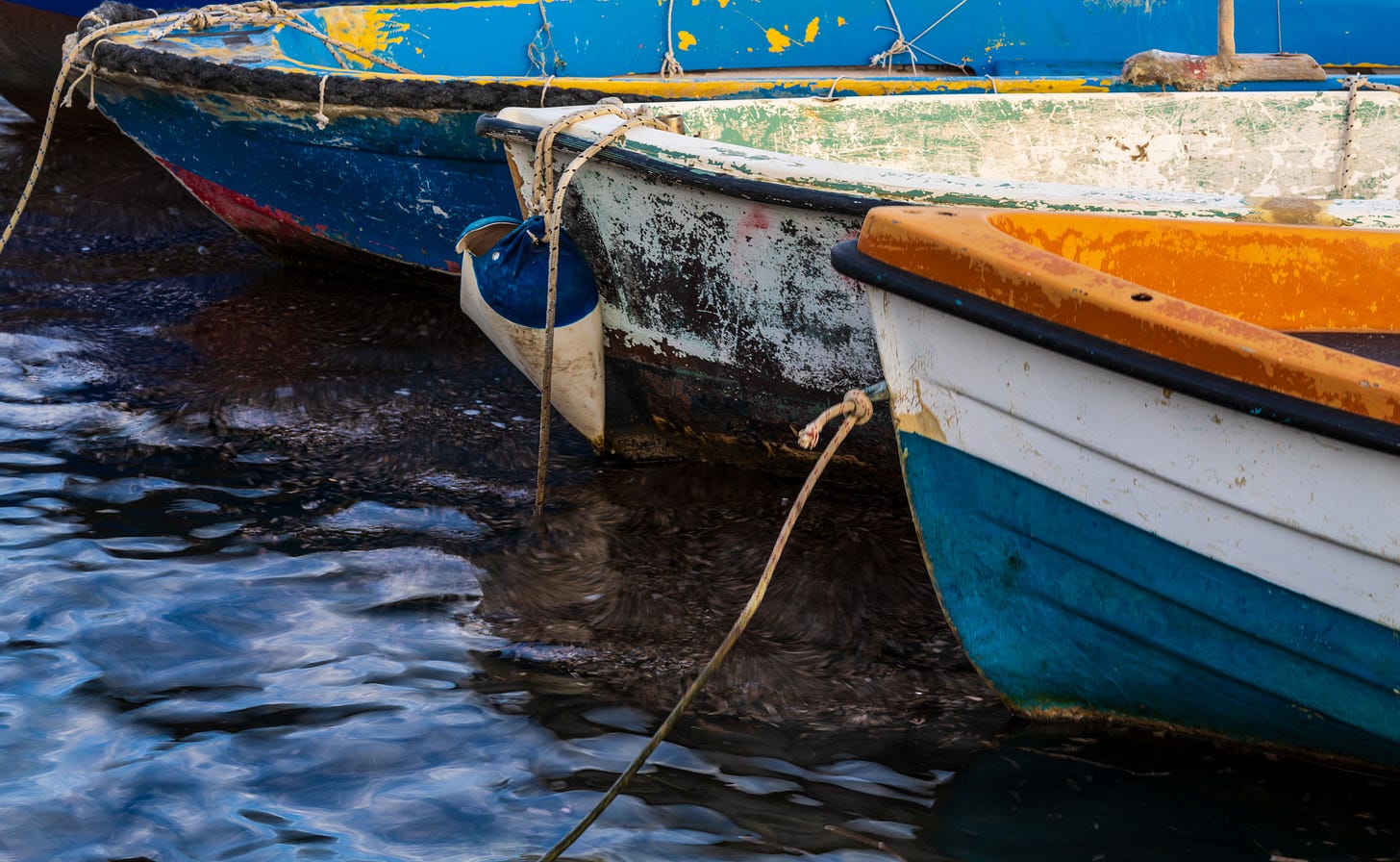
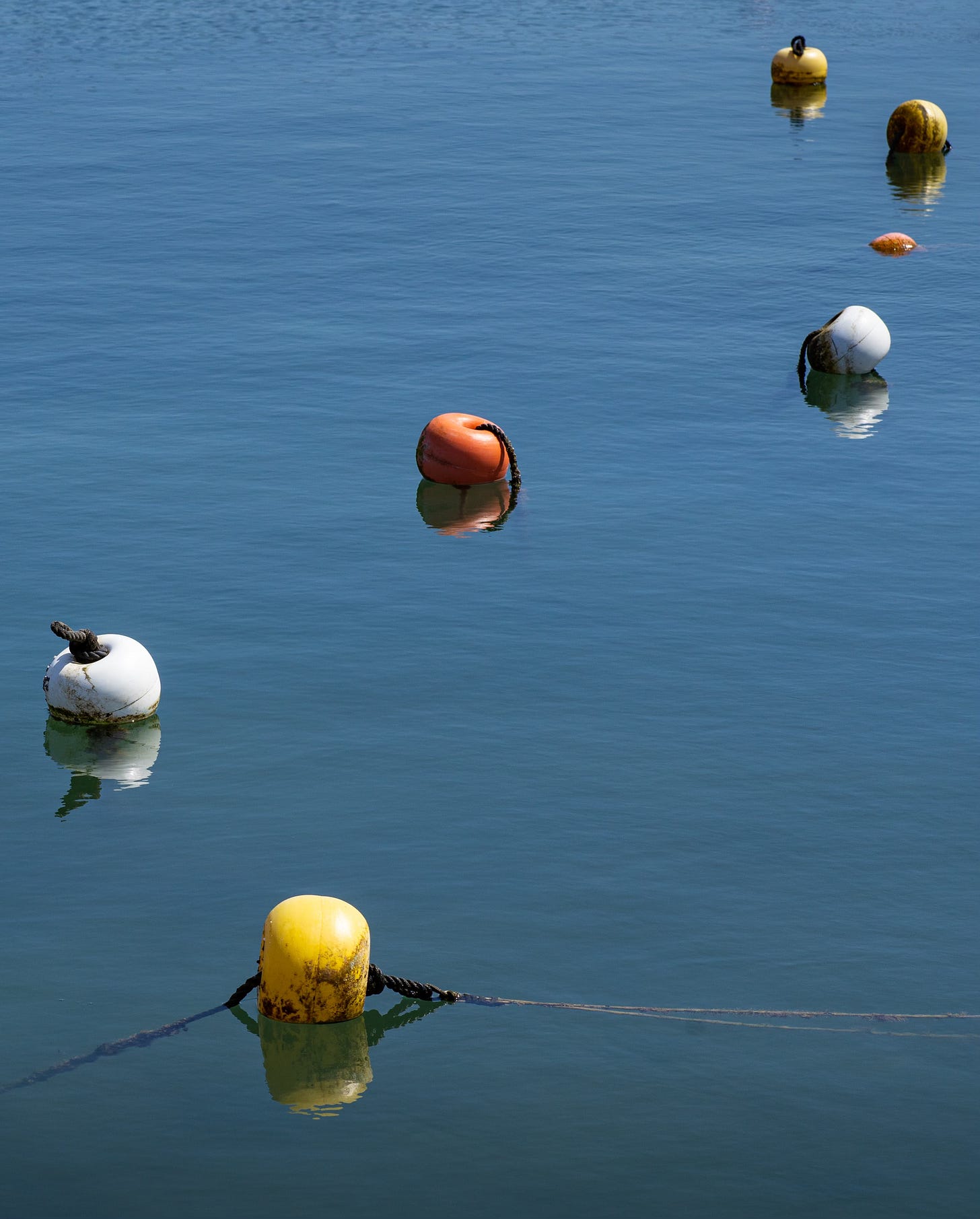
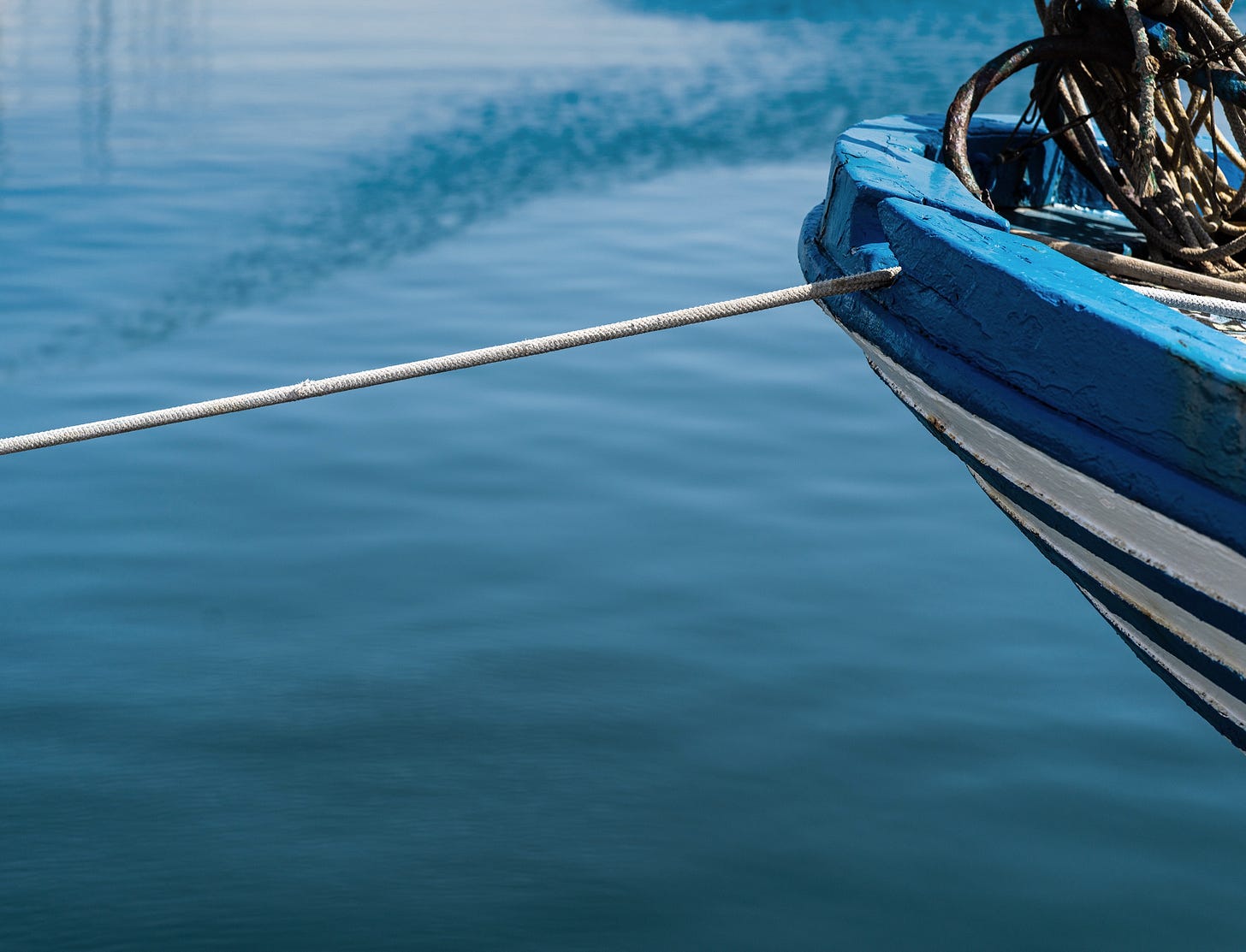
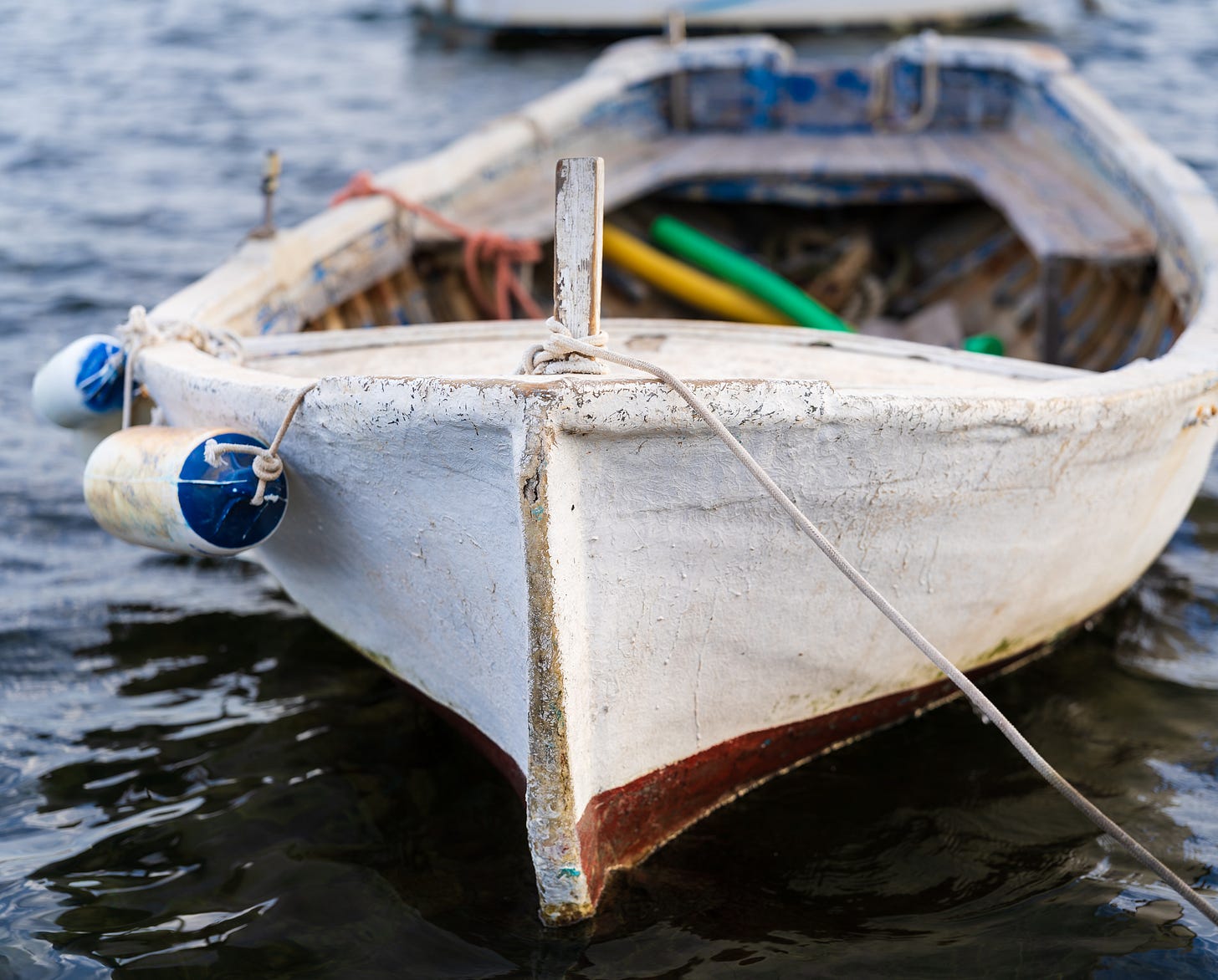
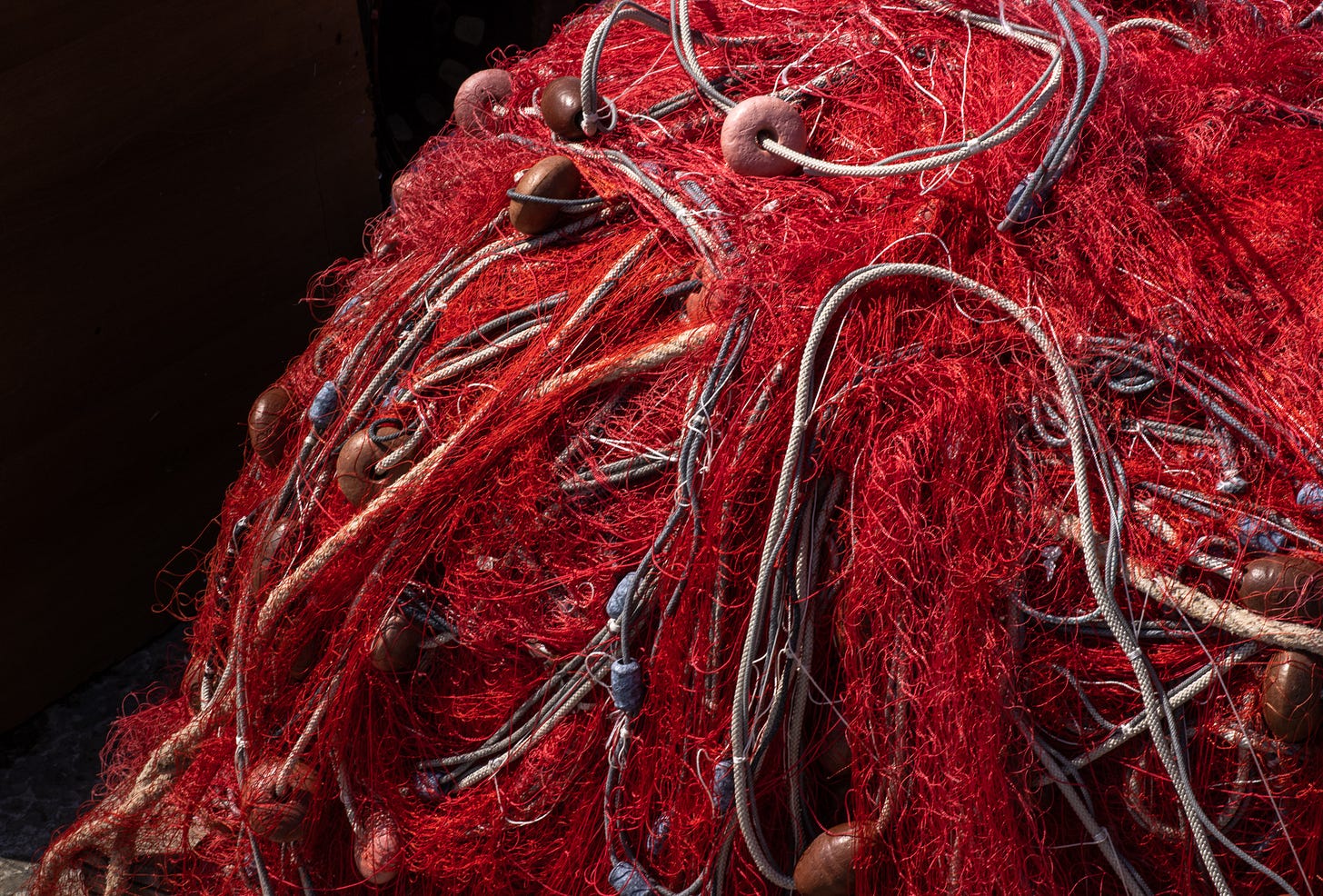
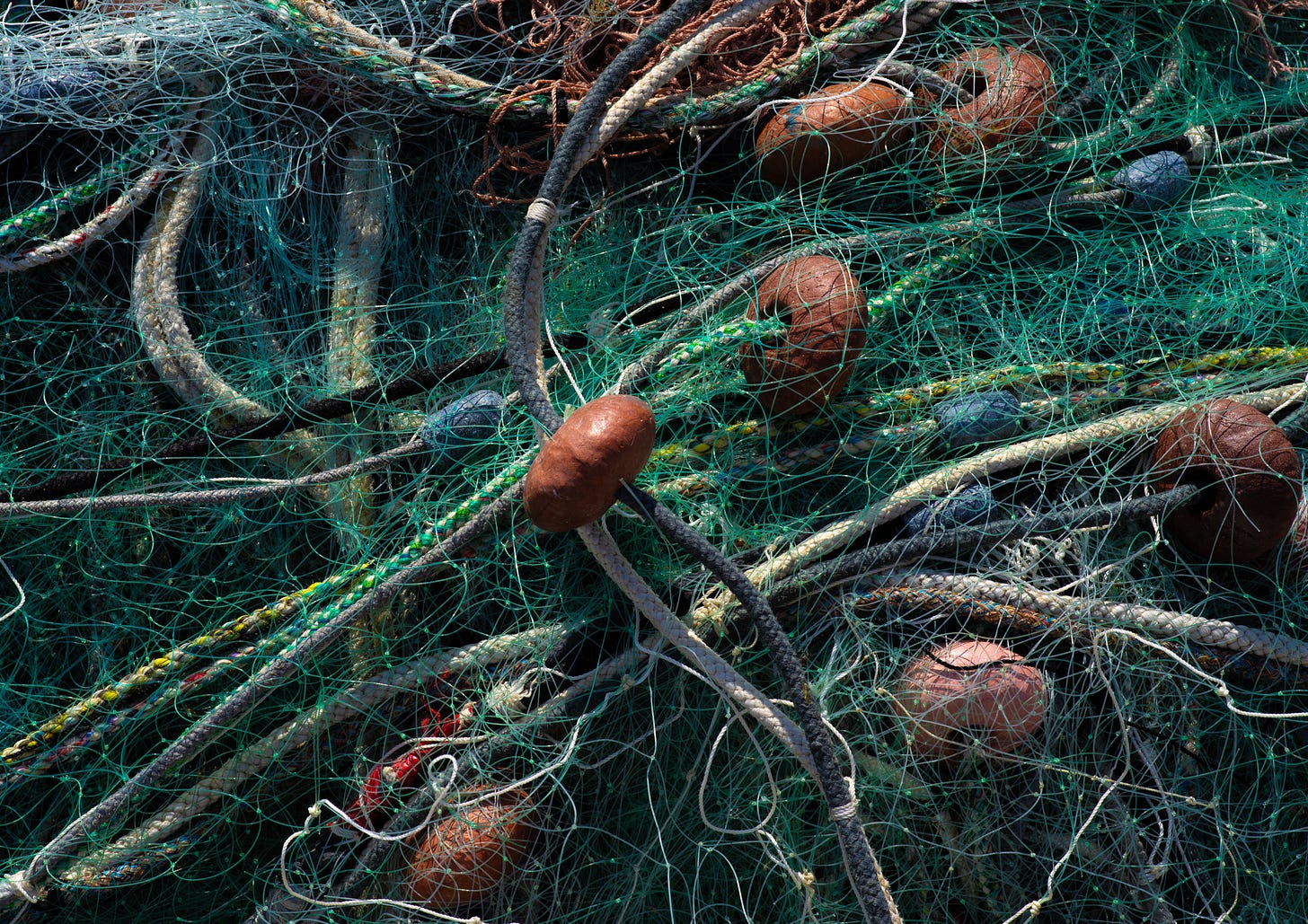
Speaks to my Soul. Growing up in small coastal town among fishermen, I could feel, sense, taste and smell every word.
One must truly be still, to see when the beauty sneaks in through the cracks.
Beautiful photographs and words, as usual. Loved this line: "Somehow it smells exactly like motion—like the world is shifting beneath your feet, and that shift is natural, expected." The boat photos are my favorites. Easy to see them moving!